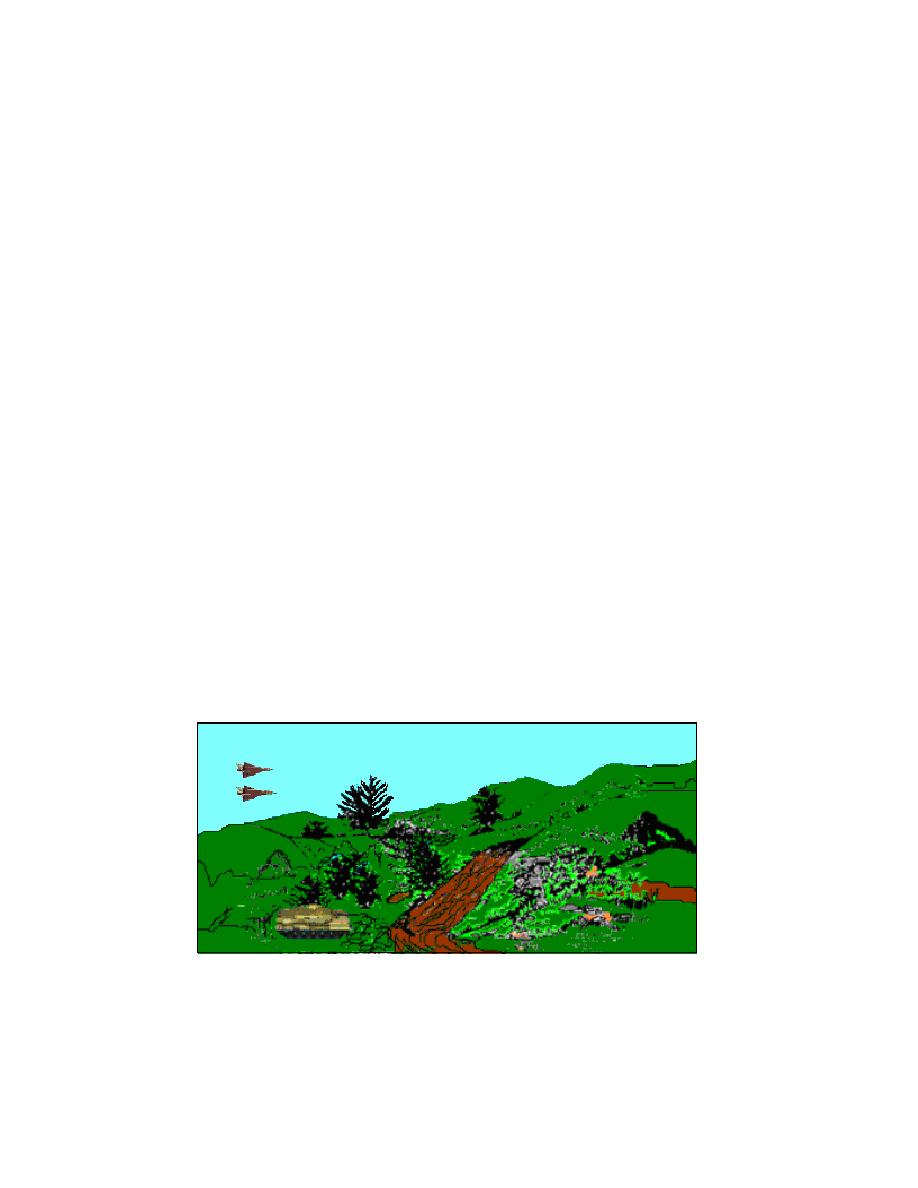
PART D - EMPLOY PASSIVE AIR DEFENSE MEASURES
1. Identify Self-Defense Measures. Passive air defense measures are all measures other than
active defense taken to minimize the effects of the hostile air action. Passive defense measures are
of two types; attack avoidance; and damage limiting measures of which includes the use of cover,
concealment and camouflage, protective cover, and deception.
a. You must accept as a foregone conclusion that the enemy has the capability to attack
from the air and that they will exercise that capability. Air attack is not a probability-it is a
certainty. Small units do not stand helpless before this threat. Simple, commonsense measures
can be taken by a small unit to avoid attack and to limit damage if attacked. Should these
measures fail, the unit has the option of fighting back. Passive air defense measures, if routinely
followed, will reduce the probability of attack, and will limit damage if you cannot avoid an attack.
Active air defense measures provides techniques for shooting back.
b. Defend yourself or hostile aircraft will destroy you. Your first line of defense against
air attack is to constantly apply passive air defense measures. If the aircraft is not attacking you
or your unit, the unit commander has a decision to make. First you may not want to fire and
disclose your position. Secondly, to engage a non-attacking aircraft you must positively identify it
as hostile. This may be difficult unless you have had aircraft recognition training. Remember if
you are not being attacked, you must be given the order by your unit commander to fire.
2. Employ Attack Avoidance Measures. Passive defense measures are of two types; attack
avoidance; and damage limiting measures of which includes the use of cover, concealment and
camouflage, protective cover, and deception. Attack avoidance means take the actions necessary to
avoid being seen by the enemy--concealment and, lacking concealment, camouflage. What can be
seen can be hit, and if you can't be seen, the probability of being hit diminishes to near zero
(Figure 17). The techniques, procedures, and materials used for concealment from aerial
observation are the same as used for concealment from ground observation.
Figure 17. Attack Avoidance
24



 Previous Page
Previous Page
